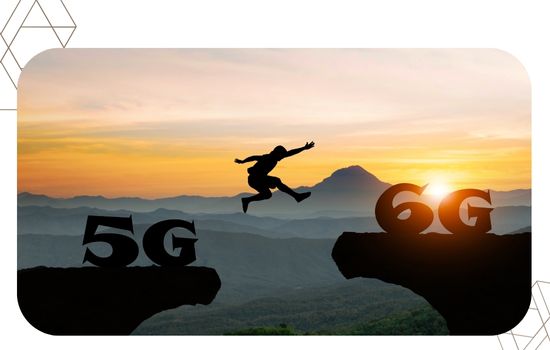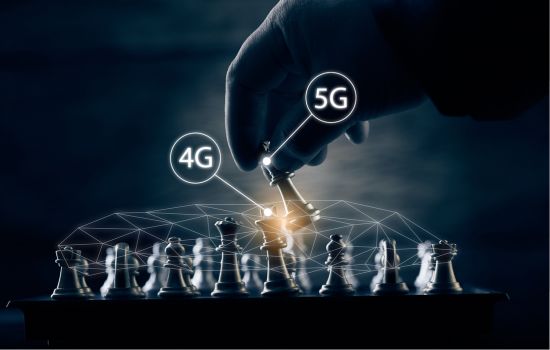Advertisements

The Key differences between 4G, 5G and 6G They represent much more than a leap in connection speed: they define how we communicate, work, learn, and even how we conceive of digital interaction in everyday life.
Understanding these changes is essential for anyone who wants to keep up with technological advances and anticipate their impact on society and the economy.
In this article, you'll discover an in-depth analysis of the key features of each mobile generation, their benefits, limitations, and the role 6G will play in the near future.
You'll also find a comparative summary in tabular form, key statistics, and examples that illustrate how these technologies are transforming everyday life.
An overview: from 4G to 6G
The fourth generation of mobile networks was responsible for popularizing the mobile internet as we know it today.
Advertisements
Streaming applications, real-time social media, and cloud-based services have grown thanks to their ability to transmit data at higher speeds.
However, digital demand exceeded its limits.
With the arrival of 5G, a new door has opened: faster connections, lower latency, and the possibility of integrating the Internet of Things (IoT) on a massive scale.
But now, in 2025, the debate is centered around 6G, which promises to go far beyond what we imagine, with applications that will merge the physical, digital, and biological into a single environment.
Technical characteristics that differentiate each generation
To understand the Key differences between 4G, 5G and 6G, it is important to analyze its specifications in terms of speed, latency, device capacity and practical applications.
| Generation | Estimated maximum speed | Average latency | Connected devices per km² | Main usage examples |
|---|---|---|---|---|
| 4G | Up to 100 Mbps | 30-50 ms | 10,000 | Streaming, social networks |
| 5G | Up to 10 Gbps | 1-10 ms | 1 million | IoT, connected cars, VR |
| 6G* | 100 Gbps – 1 Tbps | <1 ms | 10 million | Advanced AI, holograms, sensory internet |
*6G is still under development, with global deployment forecasts around 2030, according to the International Telecommunication Union (ITU).

Read more: History of video games: from 8-bit to virtual reality
4G: The Starting Point of the Mass Digital Era
4G became the backbone of mobile communications for more than a decade.
Thanks to this generation, it was possible to access video platforms like Netflix or YouTube without significant interruptions.
It also boosted mobile e-commerce, transportation apps, and digital payment systems.
A clear example of its impact can be seen in how traditional taxis were transformed by the emergence of platforms like Uber, which would not have been possible without the stability and speed of 4G.
5G: The Acceleration of the Connected Ecosystem
5G, which began its global expansion in 2019 and continues its consolidation in 2025, ushered in a new level of hyperconnectivity.
Its low latency makes it ideal for critical applications such as remote surgeries or the operation of smart factories.
An interesting fact: according to Ericsson Mobility Report 2024, it is estimated that by the end of 2025 there will be more than 1.5 billion active 5G subscriptions worldwide, with coverage reaching 85% of the global population.
But not everything is perfect: the infrastructure needed for its deployment requires significant investment, and there are still rural areas where 4G remains the only option.
6G: The leap towards immersion
When we talk about 6G, we're not just referring to higher speeds, but to a new communication paradigm.
This generation seeks to integrate artificial intelligence natively into the network, allowing systems to learn and adapt in real time.
6G is expected to be able to deliver multi-sensory experiences.
What does this mean in practice? Imagine being able to attend a concert from your living room and, through haptic devices, feel the vibration of the instruments as if you were there.
This analogy explains how 6G will transform human interaction with the digital environment.
Practical example of digital transformation
A concrete example: in the educational field, while 4G enabled mass access to virtual video classes, 5G enabled real-time interaction with smart boards and augmented reality.
6G, on the other hand, will enable holographic classrooms where students can interact with three-dimensional models as if they were real objects.
This qualitative leap is not simply a technical advance, but a redefinition of learning and the ways we relate to knowledge.
Advantages and limitations
Analyze the Key differences between 4G, 5G and 6G It also involves recognizing that each stage has its pros and cons.
- 4G: High coverage and stability, but limited for today's demands of connected devices.
- 5G: Speed and low latency, although with major infrastructure and energy consumption challenges.
- 6GIt promises immersive experiences and massive connectivity, but it's still in the testing phase and raises questions about security, accessibility, and sustainability.
Economic and social impact
The evolution of these technologies not only affects entertainment and communication, it also has a direct impact on the economy.
Sectors such as healthcare, the automotive industry, and agriculture increasingly rely on connectivity to optimize processes.
The World Bank emphasizes that digitalization driven by advanced mobile networks contributes directly to GDP growth in developing countries by improving productivity and creating new business models.
Conclusion
The Key differences between 4G, 5G and 6G They show us that every technological leap redefines the present and paves the way for the future.
4G democratized mobile internet access, 5G is consolidating hyperconnectivity, and 6G will bring an immersive revolution that will transform the way we experience reality.
Are we ready for a world where the digital and physical worlds seamlessly integrate? The answer will depend on the ability of governments, businesses, and citizens to adapt to this change.
Read more: 6G Internet: What to Expect from the Next Digital Revolution
Frequently Asked Questions (FAQ)
1. When will 6G be available globally?
Commercial deployment is expected around 2030, with advanced pilot testing starting in 2028.
2. Will 5G replace 4G completely?
Not in the short term. 4G will continue to be key in rural regions where 5G infrastructure is not yet available.
3. What risks does 6G entail?
The debate focuses on energy consumption, data privacy, and accessibility.
4. What is the most visible difference between 4G and 5G?
Latency: While in 4G it is around 30 ms, in 5G it can be reduced to 1 ms, enabling real-time uses.
5. Will 6G be compatible with existing devices?
Most likely not. New devices capable of supporting its advanced capabilities will be required.
6. Which sectors will benefit most from 6G?
Education, healthcare, transportation, and entertainment will be the most transformed by immersive connectivity.
7. Why is it important to understand these differences?
Because anticipating technological changes allows us to better take advantage of the opportunities they create in our personal and professional lives.